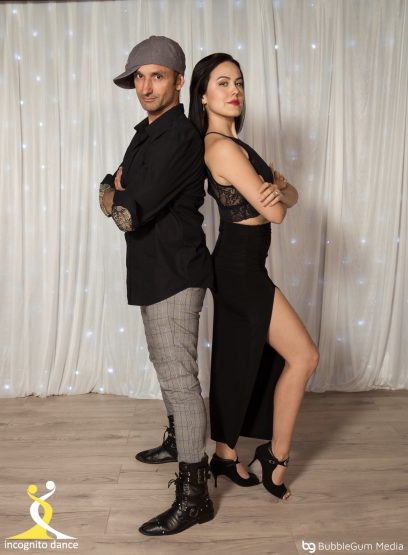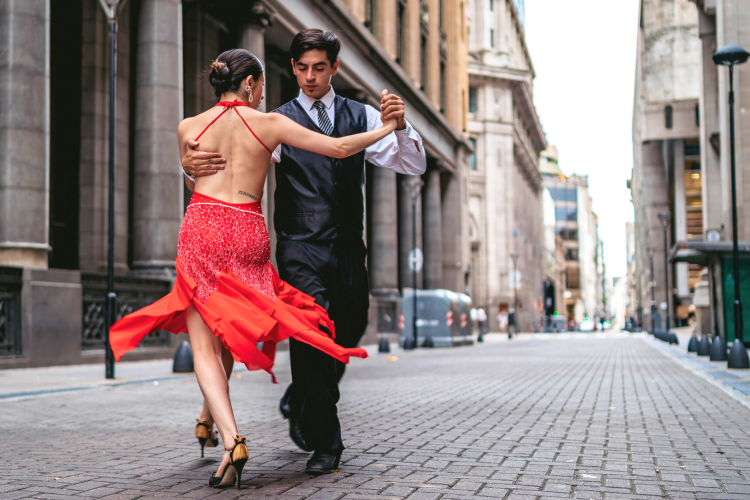Fascination About Dance San Francisco
Some Known Facts About Dance San Francisco.
Table of ContentsThe Main Principles Of Dance San Francisco Dance San Francisco for BeginnersThe smart Trick of Dance San Francisco That Nobody is Talking AboutDance San Francisco Can Be Fun For Anyone
Let's think about Salsa dancing and songs as a large Tree that appears like this: Salsa is danced worldwide while lots of technical aspects of the dancing are the exact same throughout styles (6 actions over 8 beats danced on a quick-quick-slow or slow-quick-quick rhythm), there are a number of "hallmark" functions of the major designs of Salsa that distinguish one from the other.Pairs participating in a Gambling enterprise Rueda dance all steps in unison as called by a Leader. Distinct features of Cuban design salsa are circular turn patterns (with "break back" actions on counts 1 and 5) along with body movement influenced by conventional Afro-Cuban folkloric dancings. Distinguishing attributes of Cali style salsa is quick and detailed footwork, danced with a strong hand hold link between companions.
The origins of the design are a subject of dispute, but it is said that New york city design Salsa dancing stemmed in the 1960's because of the increase of Latin American emigrants after the Cuban Transformation (salsa dancing sf). Eddie Torres is one of the most popular New York design dancer, being nearly globally attributed with popularizing the design to dance centres beyond New york city
The fundamental rhythm of "On-2" is slow-quick-quick. The "youngest" of the designs of Salsa, L.A (https://justpaste.it/ct6z2). Style (some individuals have actually called it "West Shore" design) ended up being prominent in the 1990's and has its origins in ballroom (Mambo, Swing and Cha, Cha, Cha). Transform patterns lead and follow methods are heavily affected by these designs, with the Cross Body Lead being the foundation of the design
See This Report about Dance San Francisco
Style are execution of turn patterns and numbers in the "slot", with the break actions on counts "1" and "5". While Salsa music has strong beginnings in Cuban, Colombian and Puerto-Rican folkoric practices, it can not be discounted that all Afro-Latin and Latin American cultures have actually contributed to modern Salsa music as we know it today.

There she became friends with the Nuyorican artists, and her partnerships with them and her time with the Fania All-Stars led to over 50 cds (of collective and solo work). Many thanks to the web and ease of accessibility to info, the popularity of Salsa songs, dance and culture has spread out like wildfire over the last thirty years and also then modern Salsa artists remain to pay tribute to the Starting Papas and Mommy of Salsa.

Dance San Francisco Can Be Fun For Anyone
differentiating features of Salsa songs are: 4/4 measure signature, Son Clave and Tumbao rhythms, Montuno Piano Unless you have a background in music, the above websites 3 attributes possibly indicate absolutely nothing to you. A much easier means to define Salsa songs is how it does NOT seem like other sorts of Latin American music.

It's time for lessons. With numerous workshops around and various designs to pick from, where does a complete newbie start? Many brand-new dancers pick to learn L.A. "On-1" design slotted Salsa styles are one of the most common in North America (with some exemptions of some city centres that still mostly welcome Cuban and Puerto Rican designs) and L.A.
.A. Style will rapidly educate you the principles of Salsa timing, weight transfer and turn pattern implementation. Many professional dancers, as soon as they've had a year or more of dancing L.A. Design Salsa under their belts, "button" to New york city design in order to expand their dancing vocabulary; however many dancers make a decision to stay with just one design of Salsa and enjoy their time on the dancing floor in that specific style. salsa dancing sf.
Style and New York Design all being danced in the very same club, with a lot of the dancers being able to switch over from one design to the various other from one track to the following. salsa dancing sf. Despite which style you pick it is essential to stay with that style until you're really comfortable with the principles of timing, body rhythm and foundation step implementation prior to considering "changing" designs (if you intend to)
As soon as you begin on lessons be ready to devote energy and time to learning exactly how to dance in general it takes a complete rookie (i. e., someone with little or no dancing experience) about 6 months of actively taking lessons and heading out and practicing a minimum of two times a week to reach a factor where pattern execution starts to really feel "natural".